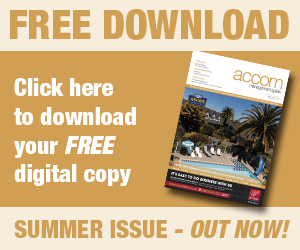Are you Prepared for Digital TV?
- Details
- Published Date
New Zealand television will soon become completely digital.
With digital TV, we will all have better picture and sound quality, more channels and advanced features such as onscreen TV guides.
The first regions to go completely digital will be Hawke's Bay and the West Coast of the South Island in September next year. By the end of 2013 we will all be watching digital TV.
So what will this mean for those in the accommodation industry? Probably very little - at least for all but a few. Nearly all those catering for tourists already have relatively modern televisions, but to go digital, they may need some new equipment.
Almost any television can be made digital-ready with a set-top-box. For those already watching TV using Sky, TelstraClear, or a Freeview compatible device such as a TiVo or PlayStation3's Play TV, they will not need to do anything. Freeview, Sky and TelstraClear all provide digital TV.
Freeview can be obtained by connecting a set-top-box to an existing TV. Set-top-boxes can be purchased from any major retail store. Sky and TelstraClear will install their equipment so that television sets all receive a digital signal.
Subscribers will need to be digital ready to continue watching television after their area converts.
Accommodation providers are almost certain to have more than one TV and will need to make sure that each one is digital ready. In a few cases they might need to re-tune their equipment.
The Government announced in September 2010 that New Zealand would make the switch, region by region. A national information campaign was launched late last year by the Minister of Broadcasting, Jonathan Coleman. "Seven out of ten households are already watching digital television through Freeview, Sky or TelstraClear," Dr Coleman said.
To provide guidance, a website, www.goingdigital.co.nz, has been set up. The Going Digital campaign encourages people to visit the website where they can find detailed information about when they will switch and what digital services and channels they can receive.
Added tourist enjoyment
Programme manager for Going Digital, Greg Harford, believes that offering high quality television experience to visitors from overseas will add to the enjoyment of their stay. "As a tourist destination, New Zealand offers real quality, and going digital means that wherever in the country they are - in a major city or remote outcrop, when a guest is relaxing in front of the television after a day of adrenaline sports or taking in the incredible sights on offer – that level of quality is maintained."
So, just what is digital television? Going digital is a new way of receiving your TV signal. A digital signal can carry more information than the old analogue network, which means it delivers better picture and sound quality – clear, movie quality pictures in a wide screen format. Many areas of New Zealand will have improved reception, especially in regions where an analogue signal is difficult to receive.
It also enables broadcasters to offer more channels and a range of new services such as onscreen TV guides. Special features, such as audio description and subtitling, are a great help for those with sight and hearing impairments. The changeover will bring New Zealand into line with a number of other countries switching from analogue at much the same time. Analogue is the way that we have received television signals since television began.
The old analogue television network will be progressively switched off and replaced with a digital signal between September 2012 and November2013.
Regional change
Why were Hawke's Bay and the West Coast chosen to go digital first? The two regions offer a combination of terrestrial and satellite reception areas and satellite-only areas. Viewers in Hawke's Bay and the West Coast also have reasonably high levels of digital TV use already (around 8l per cent on the West Coast, and around 70 per cent in Hawke's Bay) so are well set up to help others in their communities. The rest of the South Island will switch over in April 2013, followed by the lower North Island in September and the upper North lsland in November of that year.
The process of going digital began in 2007 when the Freeview satellite service started transmitting a digital signal. In 2008, Freeview launched its digital terrestrial television service, Freeview/HD.
Completing the digital switch by the end of 2013 will free up radio spectrum in the 700MHz range, which is ideal for next generation mobile telecommunications services.
These will support our economic development by offering faster and cheaper mobile broadband services for New Zealanders.


